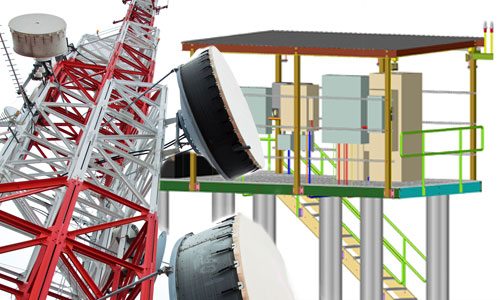VIDEO
When Patrick McNerney, Chief Operating Officer, 3D Design & Engineering and Nabil Mimouni, President, met many years ago at a Texas structural engineering company, blueprints, Polaroids, 2D drawings and sketches were the medium they used to communicate with clients. Flash forward to 2017, and a company they founded seven years ago deals with structural design in a whole ‘nother dimension.


Another way the company can capture any existing structure digitally is by using 3D laser scanning. “This can be used in sites where building conditions are difficult and extreme attention to detail must be utilized to design a site,” McNerney said. “It can be used for insurance purposes to capture your assets digitally. Or it can be used for deformation analysis…probably the best use for cell towers.”
“Because all of our services are performed in-house,” McNerney said “we are able to provide the customer with the best turn-around time and communication.”
The company is currently licensed in Louisiana, Texas and New Mexico, and will be adding Arizona and California as pliable territory in the near future. McNerney will add to the mix soon a drone pilot’s license from the FAA, providing yet another dimension to viewing a tower site.
January 5, 2017



